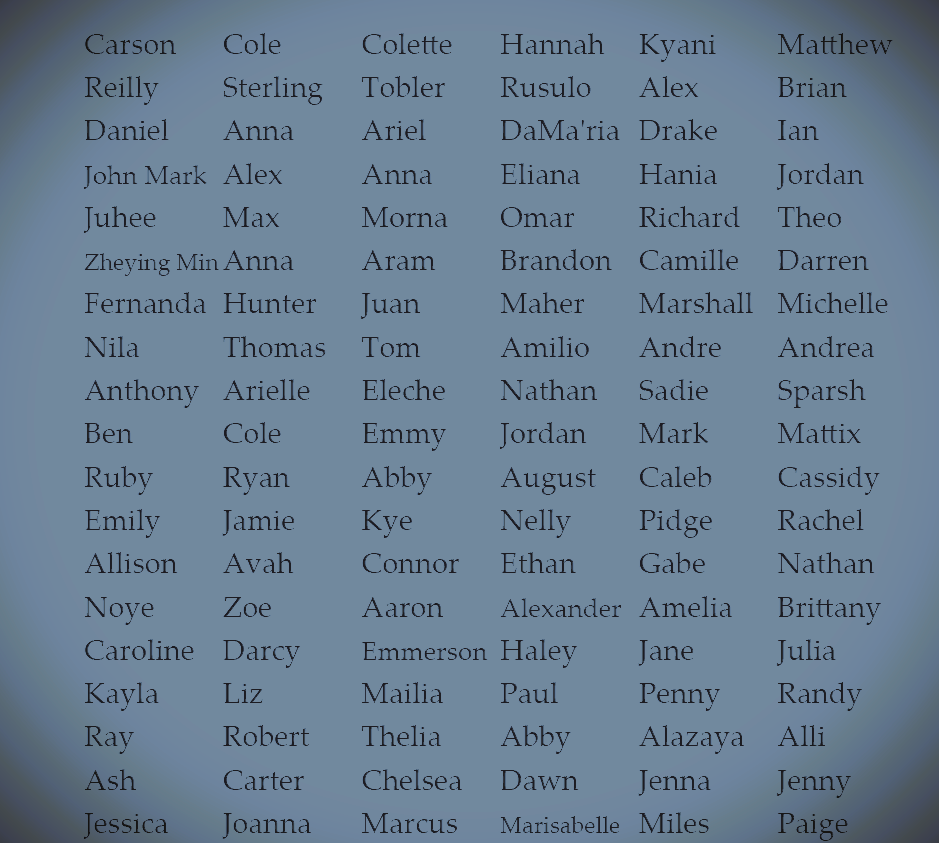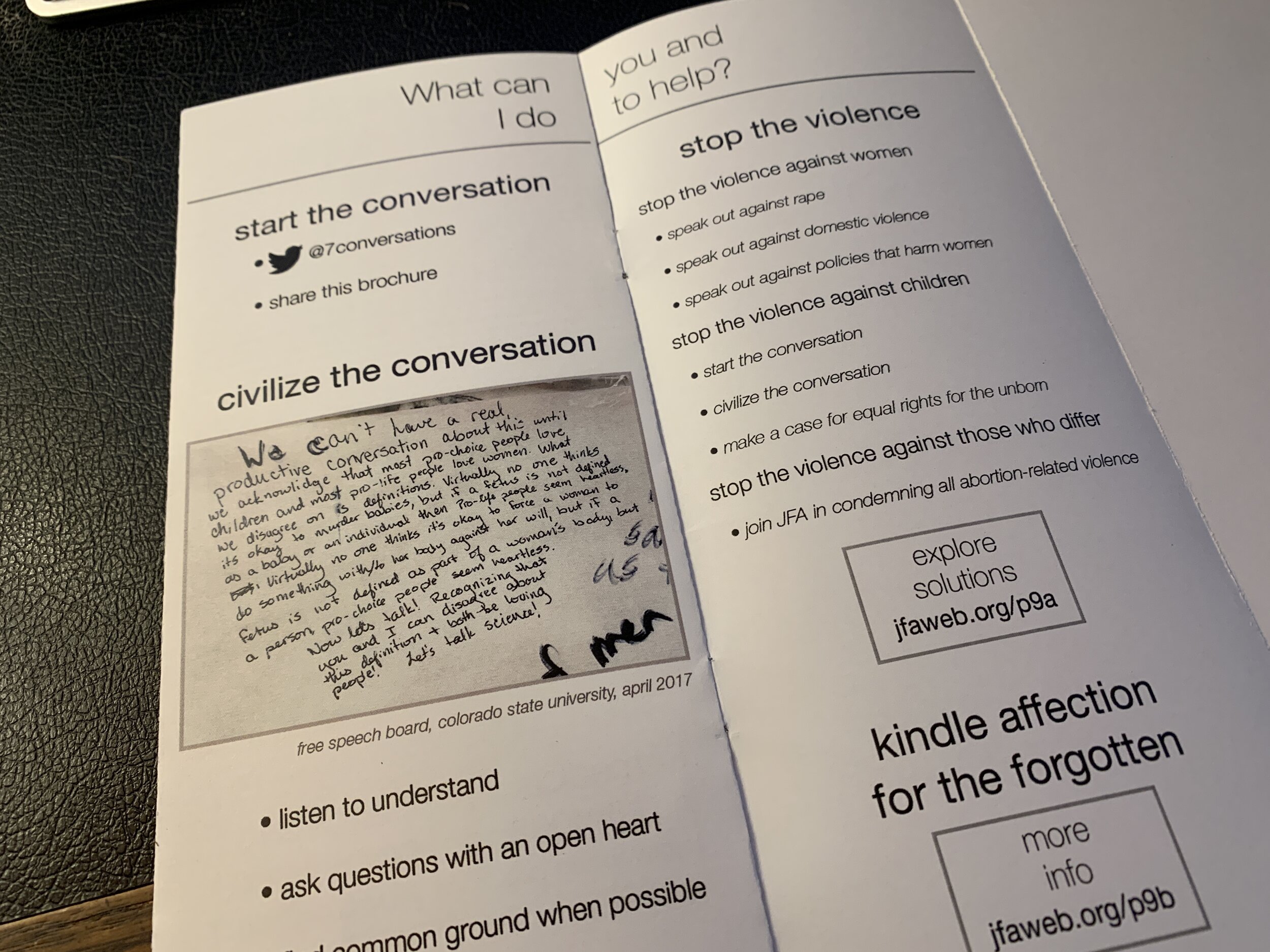Next Step: Conversation Starter to Put Session 1 into Practice
Option 1: Talk to Someone You Know Well via Phone or Video Chat or in Person*:
Consider three people you know who are either pro-choice or whose views on abortion you don’t know. Choose the person on the list who you believe will be the most approachable or easiest for you to talk to about abortion. Your goal is to start the conversation with that person in a natural, non-awkward way. We suggest using a direct approach which is up front about how you are purposefully trying to learn something, and you need the person’s help:
“I’m troubled by the fact that good conversations about abortion are rare. It seems to only be hurtful to people. I’ve been working recently on learning to discuss abortion productively. Would you be willing to sit and chat with me for 15 minutes or more and help me out? My commitment to you would be that I will ask questions with an open heart, listen to understand, and find common ground when possible.”
Please adjust the wording to fit your personality! Once you’ve had a conversation with the person who’s most approachable for you, challenge yourself by engaging one of the others on your list.
Another alternative is to tell the person you’re doing an assignment for a class you’re taking:
“I’m taking a class aimed at helping people create better conversations about difficult topics. The topics we’re focusing on are unintended pregnancy and abortion. I’m wondering if you would be willing to have a 15-minute conversation with me to help me out. The assignment for this week is to ask someone what they think about these topics and to listen, ask clarification questions, and find common ground without challenging anything that’s shared for the whole 15-minute conversation. Would you be willing to help me out?”
*During COVID-19, we suggest being very careful to respect personal boundaries and social distancing expectations. We are thinking here of conversations with neighbors over the backyard fence in which you can respect social distancing expectations but also be close enough that you don’t have to yell to be heard:)
Option 2: Talk to Someone You Care About with Whom Past Abortion Conversations Have Gone Badly
Introduce the conversation by saying,
“I wanted to contact you and say something about how I’ve treated you in past conversations about abortion. In short, I am sorry for the way I’ve treated you. I think I communicated that I don’t care about you or your opinions through the way I responded to you in those conversations. Would you forgive me? [Wait for a response.] I am wondering if you would allow me to try again. I just took a class in three skills I am trying to learn to put into practice: listening to understand, asking questions with an open heart, and finding common ground when possible. Would you be willing to talk to me for 15 minutes about abortion? I promise to do my best to use these skills to show you the respect you deserve.”
Option 3: Talk to a Stranger
The difficult thing about this suggestion during COVID-19 is that many of the usual places we might have suggested to find people to talk to (college campuses, parks, etc) are closed, and indeed, in downtown walking areas and other locations that may still be open, many people are very skittish about getting in conversations with strangers for fear of contracting COVID-19. We’ve included this idea here only to encourage you to think creatively about whether God has put people in your path with whom you could speak without making them feel uncomfortable.
For example, you may participate in a Facebook group devoted to some other topic or shared interest. You might direct message someone (if it doesn’t break community rules for that group) to ask them to take an informal survey you’re conducting. This appeal might be even more persuasive if you commit to ask 10 people to take the survey. Then you might even report back on the results of the survey to the people who took it!
If you take this approach, you might use the JFA “Invitation to Dialogue” Survey which draws questions from the JFA “Invitation to Dialogue” Brochure.
Or, you might combine this approach with Option 1 above and just suggest to the person via direct message that you’re starting conversations about abortion.
Option 4: Share Steve Wagner’s Book with a Friend
Steve Wagner published Common Ground Without Compromise: 25 Questions to Create Dialogue on Abortion in 2008 expressly for the purpose of helping people create conversations. It’s a letter to pro-life and pro-choice people written in language both groups will understand and appreciate. The goal is to start the conversation with some aspect of the discussion on which we are all likely to agree so that we can then proceed to discussing our disagreements more productively. Each chapter is short and many of the chapters model this process of moving from agreement to disagreement. This makes the book a good tool for starting a conversation. What’s more, the book is available for free at Steve’s book web page.
Tell Us How Your Conversation Went
Don’t forget to use the "Share Your JFA Story" form to let us know how it goes.














